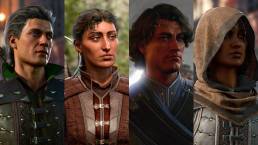
Last month I got sucked into a video game for the first time in thirty years. I wasn’t planning to, but after finishing my mandocello project I wasn’t planning to catch Covid either, so while I was stuck at home sick I played many many hours of Baldur’s Gate 3. I’m not a gamer and never have been, but despite BG3 being a combination of what I thought I’d never find compelling again or ever (video games, the Forgotten Realms D&D setting), I was hooked. What’s more, thanks to BG3’s powerful (but not perfect) character generator, I found yet another tool (after Photoshop, HeroForge, and Midjourney) to explore my character-creation hobby.
Character creation has always been my favorite thing about Dungeons and Dragons and other table-top role-playing games. Oh sure, I’m into fantasy cosmology, lore, world-building, and of course cartography, but none of those things would carry any weight without compelling characters to experience and influence them. BG3’s legions of heroes, villains, bystanders, and monsters fit the bill. Not perfectly, but well enough to keep me playing. BG3 grabbed me when other recent epic (and very impressive!) entries in the Legend of Zelda and Horizon Zero Dawn series couldn’t, and that’s down to one thing: it lets me create my own heroes.
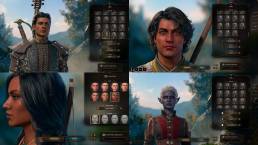
The Baldur’s Gate 3 character creator isn’t completely ideal, but it gets really close. There are only two body shapes (no fat people in Faerun, apparently!) and only so many face structures included for the (ten or so) available character ancestries (human, elf, dwarf etc.). Beyond that, though, the galaxy of skin, eye, and hair colors, plus the various options for body art, hairstyles, aging, scarring (and, uh, genitals) is expansive enough to create passable versions of my beloved D&D characters that I’ve spent so much time with since quarantine. All that is even before you begin playing (a running joke is that the character creator is the game’s first real challenge).
The game’s complex plot stretches over three acts, each of which sports their own area for exploration. These utterly massive maps are absolutely littered with loot—including gear to further customize characters. The umpteen dozen types of armor, weapons, clothing, and dyes (to change colors of said armor and clothing), helped me get my characters—who started with the pitiful level-1 gear that every longtime role-player ditches as soon as they find something better—closer to appearing the way they do in my head. Finding new ways to visualize these folks never gets old. They probably won’t ever be as detailed as what I created with Midjourney and Photoshop (I’m particularly annoyed that the closest face to my favorite bard is a widely-mocked square-jawed Everydude), but they work well enough in-game to go along and get along.
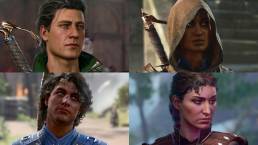
“Getting along” is critical, too—because in this party-based game, the recruitable companions (including pets!) are all really well-written and compelling characters in their own right. Furthermore, their “approval” metrics that track each player decision throughout the plot are a stark reminder that in Baldur’s Gate 3, choices matter—often to a life-and-death degree. Player-companion relationships can be anything from lurid, explicit romance to friendship to all-business to “I’m only in this because of a common enemy” to “that thing you just did was so abhorrent that I’m leaving the party and never coming back.”
The companions banter with each other during quests, they flirt like actual people (with a range from deliberately subtle to cringingly awkward) they open up to the player about their own backstories (helping friends or romantic partners through severe past trauma is a recurring theme with almost all of them), and probably most compelling, do the right or best thing when the player trusts them to be themselves. Most of them are playable options if making one’s own character is too daunting. Perhaps unsurprisingly, they have their own fandoms as big as any character from movies, TV, or books. Even the various non-player characters all have fascinatingly detailed stories associated with them and their side-quests—and there are *hundreds* of these folks.
The scope of writing, story, and characterization is staggering. Maybe this isn’t news to gamers, but it is to me. I know video games have become huge cinematic productions in recent decades, but the degree to which BG3 does this was revelatory to me. What’s more, the sheer volume of decision points ensures that no one playthrough is the “correct” one, and while repeated play has been a video game feature forever, the scope of how BG3 accomplishes this is, to a non-developer like me, literally awesome. No wonder this game took years to produce.
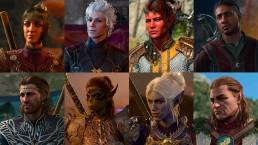
As expansive as this game is, it’s become even more so at the hands of “mod” (I assume short for modifications) packages: small to substantial lines of code that can be added in to the game’s core files. Much like other enthusiasms—tape traders, fanfic writers, etc.—BG3 players with a bit of programming skill have been able to alter almost anything about the game, from hairstyles to key early plot points. Unfortunately, mods are only available or functional on PCs, so Mac-bound me will never get to, say, add every D&D 5e spell or skirt the party-number limit of four people.
And that’s fine. I often say “I haven’t written a line of code since 2016 for anyone but myself.” That’s how I like it—because that HTML/CSS/Javascript website work had become a tedious chore that was much better when templatized. I simply had no desire to be a programmer, and that’s still true for stuff like BG3 mods. After a few haphazard stabs at getting a particular mod to work with my Mac, I gave up. My character “designs” in BG3 will be limited to what the vanilla version of the game allows, and I’m fine with that, because I can get them pretty close to their Midjourney/Photoshop portraits (see below). I even changed one Midjourney/Photoshop portrait (a drow warlock) to more resemble her BG3 incarnation. The separate versions don’t look exactly alike, but the differences from using each “tool” feel a bit like (my brain’s paraphrase of) Charles Mingus’ old aphorism about the beat in music; it’s “more a circle to land within than a dot to land upon.”
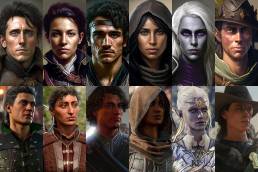
But I didn’t mean to write a “how I gave up on character design because I hate coding” post, so I’ll round this out with a few stray observations. The last time a video game hit me this hard was Final Fantasy 1 circa fall 1992, when I was laid up with two broken bones and immersing myself in a fantasy world as real as anything in Tolkein or the dozens of historical fiction novels I’d hoovered up in middle and high school. The common thread was characterization, even for something as simple as FF1, which only allowed me to give *names* to pre-generated characters (though making my BG3 monk match the old FF1 monk was a neat trick).
That was enough back then, and BG3 seems to be enough right now. I’m just about at a place where I can put the game down—with four simultaneous play-throughs saved in various plot acts—because it’s sorta served its purpose. Like the previous two “tools” in this post series, it’s allowed me to use a medium that I didn’t build (whether Photoshop or HeroForge, or Midjourney) to create unique and compelling characters that I unreservedly love, more than anything made by anyone else. It’s not “art,” and I don’t know if it’s “design” either, but those descriptions feel irrelevant to most things I create for fun these days. “Fun” works just fine.